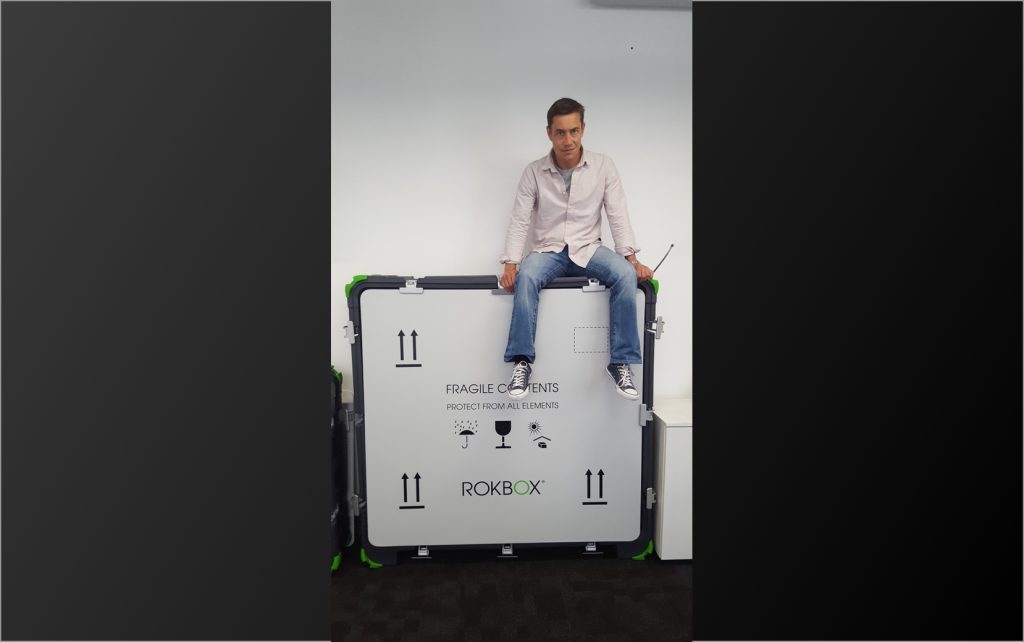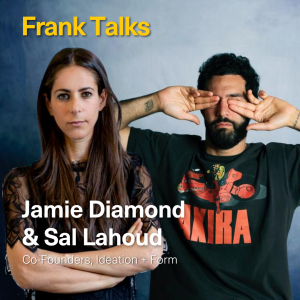This week we sit down with Andrew Stramentov, Founder and Managing Director of ROKBOX. We are particularly excited to bring you this entrepreneur’s Frank Talk because of Andrew’s commitment to the environment. Andrew has worked for eighteen years in the art market, including at Gagosian, Ben Brown, Sotheby’s, and international art foundations before founding ROKBOX. In 2014 Andrew teamed up with Verity Brown, whose career traversed fine art shippers and international galleries looking after their art, and Anthony Fraser, a packaging specialist, and finally a design brief was created. After 100+ design iterations, weeks of third-party benchmark testing, 3 prototypes and 2 fundraising rounds later, ROKBOX won the ‘best of the best Red Dot award’. ROKBOX is now being used by fine art shippers, galleries, museums and collectors and artists globally. ROKBOX crates are reusable, adjustable and recyclable. They will dramatically reduce the environmental impact of artwork packaging. Fewer cases will need to be commissioned, less packaging will be used inside those that are, and the volume of waste to landfill will be less. Please enjoy reading Andrew’s Frank Talk below!
What was your first art job?
Exhibition/Art Fair coordinator/schlepper for seven years at Gagosian and a porter at Sotheby’s for 9 months before that.
What was the most useful or important thing you learned at that job?
Discretion. Other people’s lives/paintings/deals are precious.
Tell us a little more about yourself. When did you realize you wanted to pursue a career in this industry?
My father was involved in finding avant-garde artworks from inside the Soviet Union and bringing them to London during the cold war. As a small child I remember being in galleries as people talked and gesticulated excitedly over canvases with blocks of color on them – and I just thought it was brilliant and wanted to explore. I’ve been really, really lucky and have done a huge variety of things; I’ve worked for galleries, dealers, auction houses, artists and foundations, I’ve sold and bought artworks, set up art fairs, exhibitions and museums all over the world. It’s a mystical, mad minefield.
What do you do now?
I am the Founder/CEO of ROKBOX, a research and development company that creates sustainable, safer, more economical and environmentally friendly things for moving and storing fine art.
Where are you from?
London
What is the arts community like there?
Busy.
Has where you come from shaped what you do in the arts today?
London is one of the largest focal points for the arts, we are exposed to the enormous variety and volume that flows in and out cyclically, year after year, it’s beautiful and bonkers.
What is the best piece of advice you can give about working in the art world?
Despite the perceived glamour and high stakes, its mostly high risk and hard work.
What is one of your greatest accomplishments in your career so far?
Seeing a problem and creating a solution that can have a meaningful impact on the problem. We were driven mad by the mountains of rubbish after every install, art fair and biennale and heard often of irreplaceable artworks lost because of avoidable things like rain or the wrong sized screws being used. We made it possible to stop some of this with ROKBOX. Hugely gratifying. And then won the Best of the Best Red Dot Design award for it, which was pretty amazing.
What has been a challenge for you?
Inertia. Naysayers. Despite the intrinsic forward thinking and challenging nature of artworks and the art world there are a few people who lack any imagination. When we suggested we might use environmental scientists, industrial engineers and modern materials to protect irreplaceable artworks better than before and stop throwing stuff away all the time the dumbfounded/bemused and occasionally horrified faces of some will always be with me. You wouldn’t put your money in a wooden safe. Would you?
What is something you do every day at work?
Feel lucky. We have an office where we work with people we like and respect, some of whom we have known for years. We can make mistakes, throw ideas around, fight, and all the while be surrounded by artworks gifted and loaned by artists and friends. It’s awesome. I pinch myself a lot.
What is one of the weirdest things you have had to do on the job in your career?
Test our cases to the same standard as ground to air missiles. One case contains death, the other beauty, both need to be kept really, really safe.
What defines a good employee? What defines a good boss?
Employee: when the going gets tough, good employees don’t go, they put their nose to the grind stone.
Boss: Manners are free, use them, be accepting of the fact that everyone has strengths and weaknesses including me.
What do you think makes a person hireable?
Still trying to figure that out. I’m not sure I’d hire me most days. Sense of humour and a willingness to get stuck in.
What is your advice to making yourself stand out in your workplace?
Very little gets done with any kind of project or business without a team, so be good in a team. Help solve problems, don’t whine when it gets hard, which if you’re doing something worthwhile and or interesting it will be. And no one likes a kiss arse. (apart from me)
What are things you can do proactively boost your CV?
1 or 2 pages maximum. Clear, and organized, only key information. No one wants to hire chaos. That’s for the artists.
Are there any tips you can give people entering the workforce?
Be prepared to do boring stuff, nothing and no one is beneath you at the beginning and you can learn lots at the bottom. Lots.
In your experience, what are things to do and things to avoid during an interview?
Be honest and tell the truth, businesses can make accommodations for all sorts of things, but only if they know. Don’t be late. Brush your teeth.
Any other anecdotes about your experience in the art world that you would like to share?
Lots I’d ‘like’ to share, but the ‘discretion’ thing lingers.
What is the best exhibition you have seen in the last year?
Klimt / Schiele at the Royal Academy was pretty outstanding.
If you could own a work by 5 different artists, who would be in your collection?
I am going to be specific because I think about them a lot:
Francis Bacon – Screaming Pope
Ilya Kabakov – The Man Who Flew into Space From His Apartment
Caravaggio – David with the Head of Goliath
Glenn Brown – Lets Make Love and Listen to Death from Above
Ali Banisadr – Fravashi




